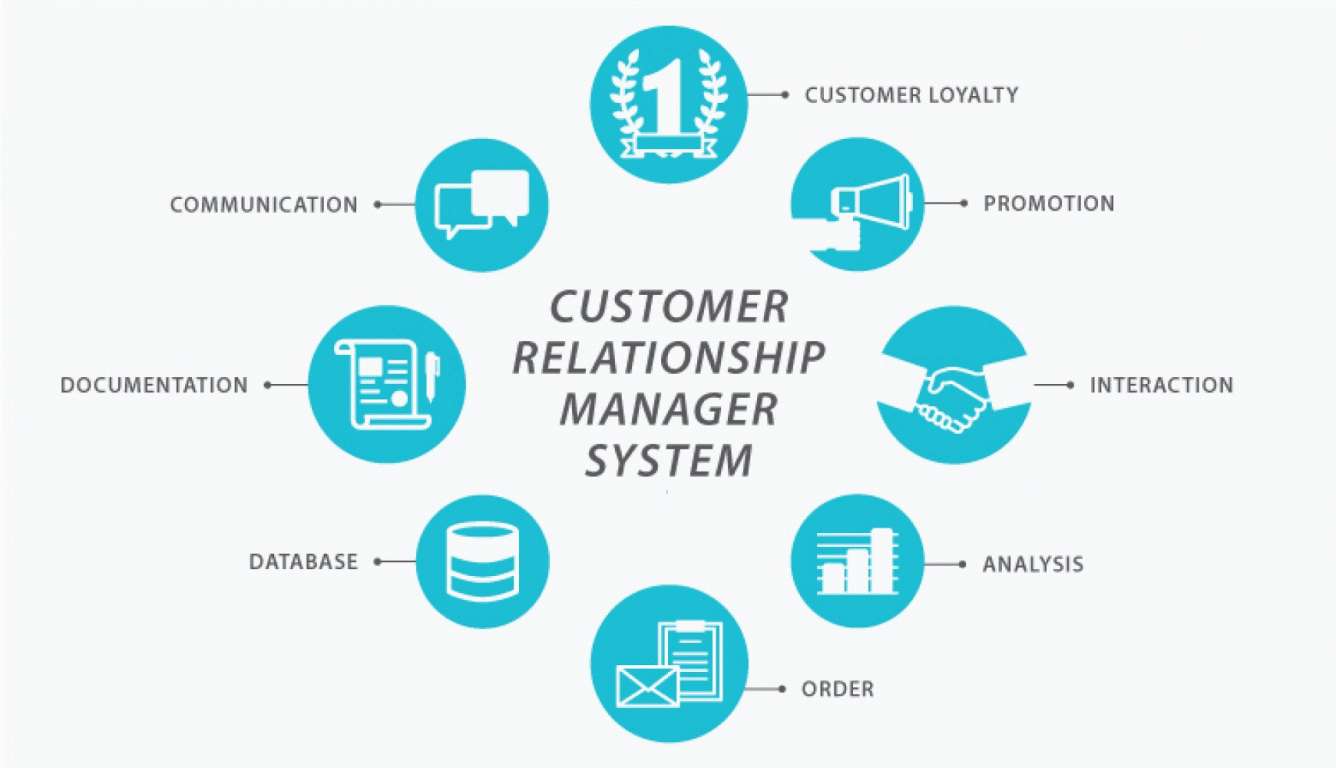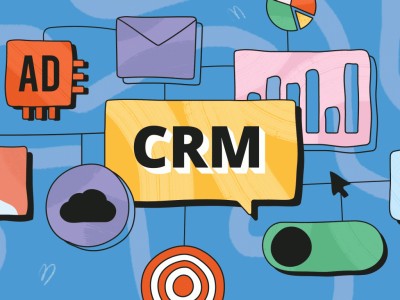What is CRM design in Babolsar?
One of the most important developments in the field of customer communication and intra-organizational communication is the development and design of CRM systems. CRM stands for customer relationship management and its purpose is to manage the relationship with our customers and how to respond to their needs and requests in the best way, which will make our business more successful. CRM design in Babolsar has also entered the field with the aim of studying customer behavior, understanding their needs and determining the appropriate strategy to meet these needs. Considering the competitiveness of the markets and the centralization of the way of interaction with customers, in order to maintain them and of course to turn them into a strong media, having sufficient knowledge of the customer's interests and needs is an undeniable necessity. This can be achieved with the design of CRM in Babolsar and on the other hand, it helps to improve the status of your website. Because communication with customers is one of the most important parts of business.
Another part of management activists emphasize that CRM is an attitude with emphasis on creating, maintaining, developing and deepening the relationship with customers. In this attitude, modern technologies may or may not be used. There are even books in the field of CRM that have not made any serious reference to the possibility of using technology in this field in order to emphasize the management aspects of customer relationship management. These people start defining the history of CRM and customer relationship management with the words of "Peter Drucker": The goal of every business is to create and keep customers. This type of discussion is so serious that many books in the field of customer relationship management use such titles in their explanations to emphasize being moderate: CRM - A Balanced Approach or customer relationship management with a balanced view and Simultaneous attention to managerial aspects and technological aspects.
Why is CRM design important in Babolsar?
What is clear is the importance of CRM systems for your business development. In a city like Babolsar, where there are many large stores, companies and tourist structures, CRM design in Babolsar can be an effective factor in launching you towards your goals. CRM design in Babolsar provides you with an opportunity to identify ways to improve customer relations. On the other hand, administrative CRMs are also widely used. For this reason, CRM design in Babolsar is also very important in the administrative field. Organization managers will be able to view useful information such as current sales, schedule of meetings and calls, pre-invoices, tasks assigned to others, results of marketing and advertising activities, etc.
Company experts will also see all their daily activities in the organization by means of Cartable, which can be customized according to their needs, so that they can plan their daily activities easily. Kartabal is a useful tool for quickly accessing various information in CRM software and increasing productivity.
Also, in the customer relationship management software, they will be informed about the work status of their colleagues regarding these sales and how to communicate with the customer.
What does CRM design in Babolsar offer us?
CRM design in Babolsar helps you to get to know your customers in a connected chain, with this recognition, you can turn them into permanent or long-term customers, and through this human capital, your customer club. Expand and attract more customers to your business. . With the design of CRM in Babolsar, you can, for example, learn about the interests and tastes of the participants in an exhibition and identify your potential customers. Or develop those parts of the business that are most interested in customers and draw their attention to other aspects of your work. Finally, by providing the best customer service, strengthen your relationship with them and turn them into a permanent customer.
Where to go for CRM design in Babolsar?
The design of CRMs is a specialized matter with important details that must be paid attention to. To order CRM design in Babolsar, be sure to contact a professional team to get the desired result. Naranji Group with a long history in designing CRM systems can provide all the services you want in this field. If you need CRM design in Babolsar, be sure to contact us.
Types of CRM
Four types of CRM are used in organizations:
Strategic CRM
Shapes your business strategy in the field of customer-centricity and helps you to attract new customers and keep your current customers satisfied and profitable. This strategy plays a very colorful role in your organization because it creates the correct customer-oriented organizational processes and culture in your business.
Operational CRM
Manages operations and automation of customer service processes such as marketing, sales, and after-sales service processes. There are processes in the organization by which you respond to the needs of your customers in different situations when they are in contact with you, for example, when the customer requests to receive his after-sales service, how the organization responded to him and the service he expected. presents to him. In this way, you will get help from CRM software to manage the large amount of customer information, files related to them, etc. in a better way.
Analytical CRM
The process by which you transform operational data collected from marketing and customer relations into information that helps your organization make process and strategic decisions. For example, the results of the sales of various products will help you find out which products and product features you should focus more on, or the results of attracting customers after a marketing campaign will give you insight into how to organize your next campaign more effectively.
Interactive CRM
It is the interface between you and the outside environment (customers and representatives) that helps you create more value for your customers. In fact, the systems will help you to receive your customers' feedback, both positive and negative, to hear their requests easily and to follow them in the organization. Azide. Some communication channels include telephone system, email, SMS, chat, etc. In addition to customers, this software can also communicate with your representatives, distributors and suppliers.
How to implement CRM?
Implementing a "CRM" system is much more than installing a "CRM" software and customizing it. Success in the implementation of the "CRM" system requires modeling and re-engineering of organizational processes, analysis of requirements, setting goals and planning, as well as creating a culture in the organization. "CRM" software is just a tool to implement the customer relationship management system. Although it is important which software you choose to implement the "CRM" system, installing a "CRM" software is not the whole story. In order to be useful, CRM software must be customized based on your needs and desires. Otherwise, if you buy and install the best "CRM" software in the world, such as Microsoft, it will not be of any use to you. In order to ensure the success of the customer relationship management system implementation, you must go through the following steps for this purpose:
1. Recognition and evaluation
If it is not clear where we are, reaching the destination is meaningless. Therefore, as a first step, you should determine exactly what situation your organization is in. This work can be done through the evaluation of key performance indicators (KPI) and in-depth interviews with key people of the organization. Business model, mission and vision, marketing and sales strategies, human resources, processes related to customers and related organizational infrastructure are the areas that are recognized and evaluated.
2. Process modeling
As a first step, the organizational processes that are supposed to be affected by the CRM system should be modeled. Prepare a detailed description of the different stages of your machining and also the workflow. For example, if you want a "CRM" system to manage your sales, you must describe and model your entire current process from the moment of customer contact to contract signing and order delivery. One of the standard software for modeling organizational processes is "Microsoft Visio" software.
3. Determining goals and analyzing requirements
In the second step, specify all your desires and goals in detail. The goals and demands of the organization in the implementation of the customer relationship management system should be specified in detail and the needs of the organization to achieve the desired goals should be analyzed and analyzed. Requirements are exactly what you need to achieve your goals. For example, if your goal is to control the organization's sales situation, one of your requirements will be access to online reports. Determining business requirements and determining a solution that will satisfy the mentioned requirements will be done in this step.
4. System design based on "CRM"
Now that the demands and requirements as well as the processes are defined, the MS-based "CRM" system should be designed in order to achieve the objectives and cover the determined requirements. Modeling processes and workflows, designing required analytical reports, designing forms and also determining required workflows are among the activities of this stage.
5. Development
In this step of the implementation project, the installation and configuration activities of the "CRM" software, as well as its customization and development, will be carried out based on the information collected in the previous steps (system design and requirements, as well as workflow).
6. Establishment
In this step, the "CRM" system is ready for launch after testing and final approval. Personnel training at the management and user levels takes place in this step. The training is started by holding a training workshop to prepare the personnel to use the system, and educational documents such as videos and models of organizational processes based on "CRM" are provided to the users. To reduce risk and manage crisis, make sure that users are comfortable with CRM software to perform their daily tasks and have no problems. Monitor and optimize the system in real conditions during the installation time and at the same time as using the "CRM" system.





